Race analysis by Nick Bull
Spoiler alert: this year’s Ronde van Vlaanderen was actually a tale of four world champions: two of them – Julian Alaphilippe and Anna van der Breggen – as the incumbent rainbow jersey wearers, as well as Chantal van den Broek-Blaak and Amy Pieters. Unfortunately for everybody else competing in Sunday’s women’s race, the final three riders on the above list all ride for Boels-Dolmans.
History today records a second one-two at Flanders in three years for the all-conquering Dutch team, although without van der Breggen’s selfless efforts such a dominant result may not have been possible. Boels had four riders in the 17-rider front group at the start of the Oude Kwaremont; although last week’s Gent-Wevelgem winner Jolian D’hoore saw her chances of becoming only the second Belgian victor of the women’s Ronde disappear on the climb, it was over the top that van den Broek-Blaak launched her race-winning move. “I feel very happy,” she said. “I’ve been waiting all season for this moment. I’ve dreamed about [winning] the race for a long time and now I finally have it.”
42KM TO GO
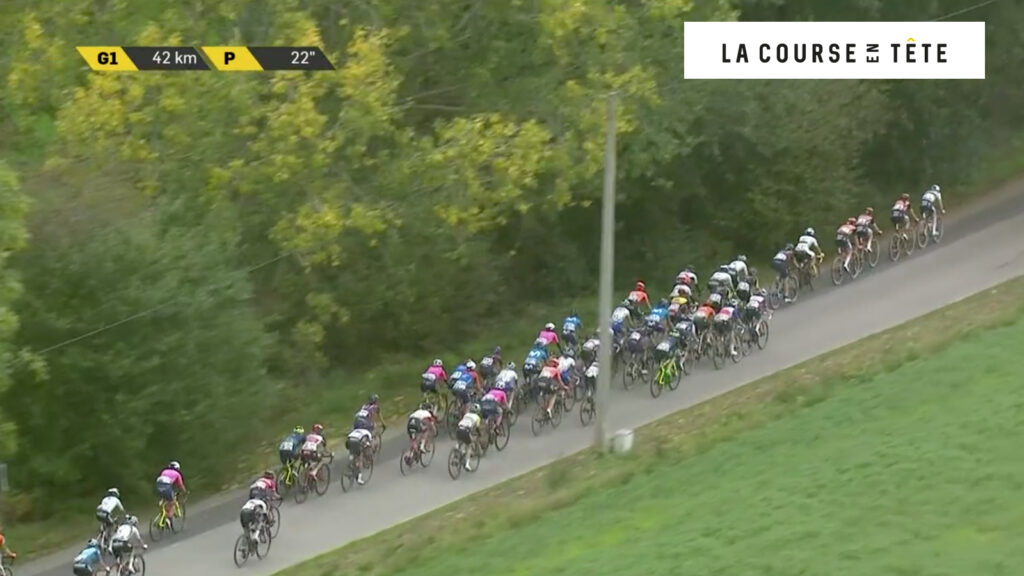
Boels take the race up on the approach to the Kanarieberg, although van der Breggen’s pace-setting on the climb only puts the early-shift domestiques (including the likes of Trek-Segafredo’s Trixi Worrack) in difficulty. Leading the race at this point are five breakaway riders who broke clear – initially as a group of seven – in the opening 25 minutes of racing. They’re caught on the Taaienberg, soon after.
After five kilometres of relative calm in the peloton, CCC’s Riejanne Markus attacks approaching an unlisted cobbled sector at Nukerke. Canyon SRAM Racing’s Alena Amialiusik, a sixth-place finisher in the Ronde five years ago, is the only rider to follow. They have a 53-second gap at the bottom of the Kruisberg.
26.5KM TO GO

The peloton is reduced to just 17 riders thanks to van der Breggen’s fierce tempo on the Kruisberg. However, there was no respite as the riders turned off the cobbled climb as van den Broek-Blaak launched her first attack of the race (she can be seen launching her move on the right of the above picture as Trek-Segafredo’s Elisa Longo Borghini assesses the state of play). Longo Borghini and Lisa Brennauer (Ceratizit-WNT Pro Cycling) quickly neutralise the move.
Van den Broek-Blaak’s second acceleration is also unsuccessful, although it coincides with the end of Markus’s and Amialiusik’s time at the head of the race. It also provides Annemiek van Vleuten a perfect springboard to counter-attack. The reigning European champion (and 2011 Flanders winner) is savvy enough not to let such an opportunity pass by – both Longo Borghini and van der Breggen won the 2015 and 2018 editions respectively by jumping clear this far out.
24KM TO GO
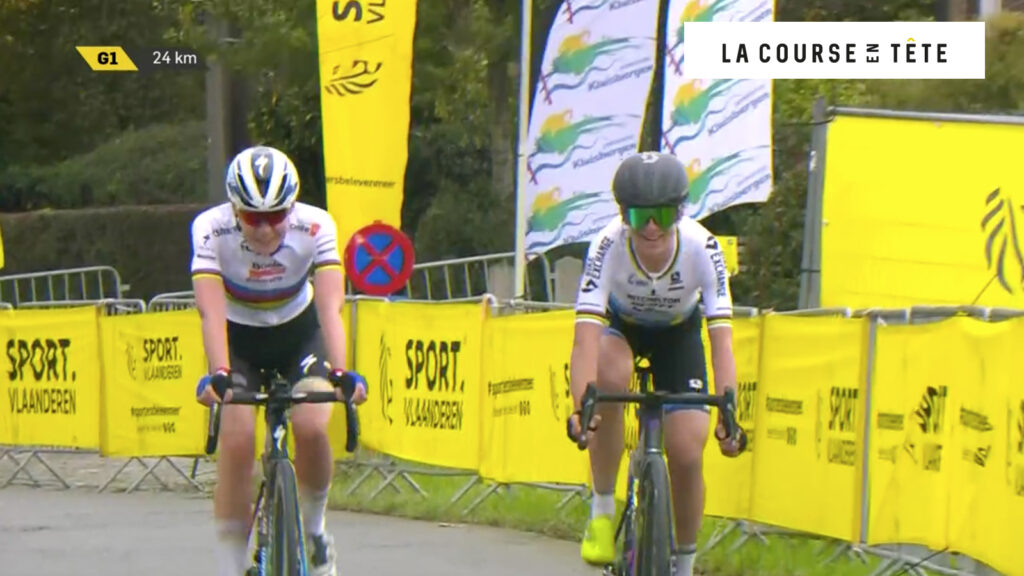
The only rider who was alert to the danger and had the legs to ride across to van Vleuten was van der Breggen, who, after a two-minute, 15-second chase, bridged across to her fellow Dutch rider. In case anybody was uncertain of van der Breggen’s role in this race, she decides not to co-operate with the Mitchelton-SCOTT rider. Cue the (slightly forced) smiles in the above still. Interestingly, van Vleuten also backs out of pushing on solo, which gives us an indication of her mid-October, post-Giro crash form. The chase group doesn’t actually have to, er, chase that hard to bridge across to the leaders, which they quickly do.
18KM TO GO
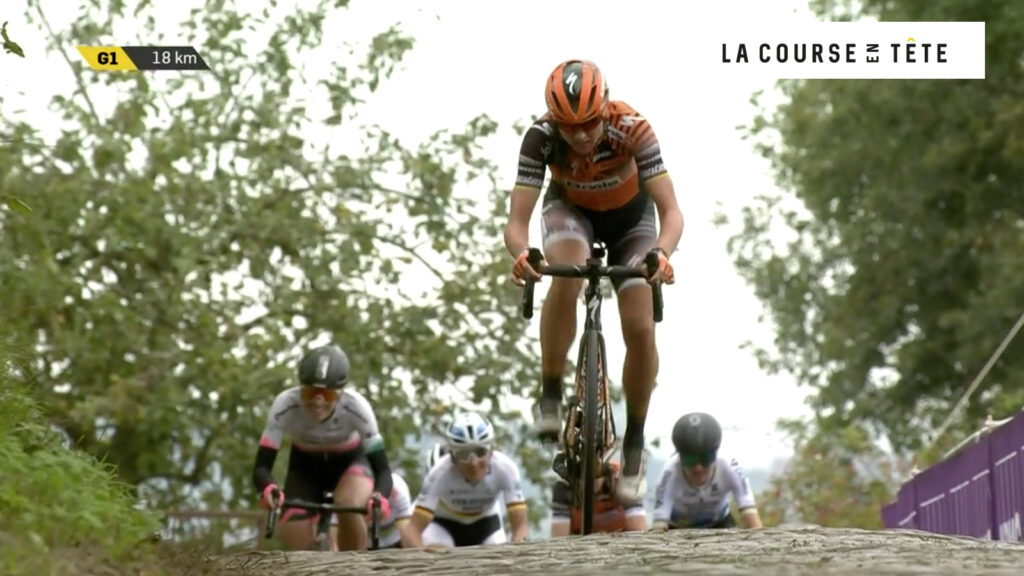
For the third time in five editions, the Oude Kwaremont was the scene of the race-winning move. Brennauer set an aggressive pace at the head of the peloton on the tougher parts of the climb before van Vleuten took over approaching the false flat section towards the top. Just as it seemed everybody was saving themselves for the Paterberg, van den Broek-Blaak kicked, launching an impressive seated attack. The first rider to pick up the chase was Flanders debutante Demi Vollering (Parkhotel Valkenburg, seen on the left of the above still), but she never looked like getting on terms with the eventual winner. Nonetheless, turning off the climb (with a little under 16 kilometres remaining), the gap was just four seconds.
13.5KM TO GO
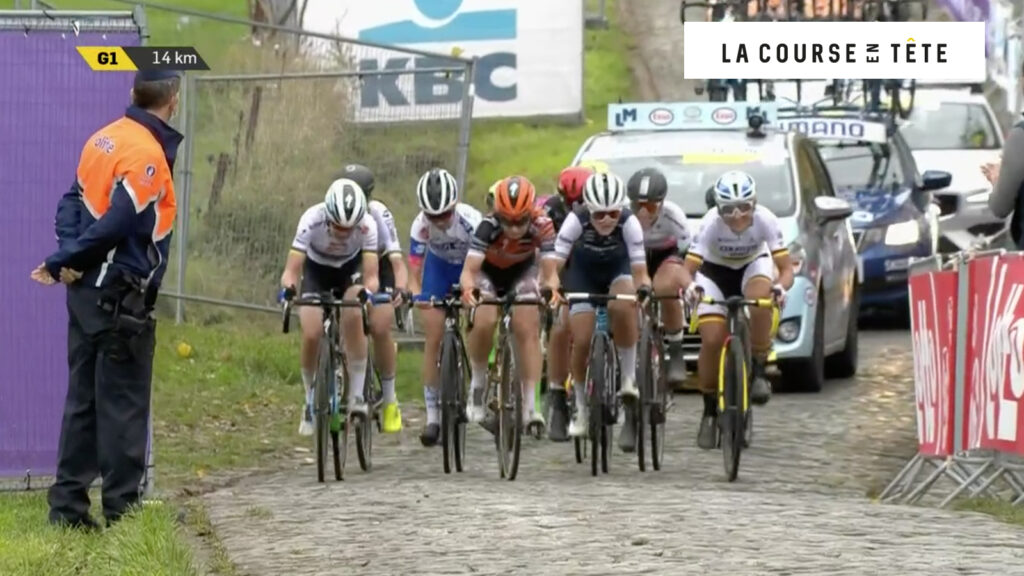
Van den Broek-Blaak’s advantage at the bottom of the Paterberg was a little over 10 seconds, so the race was far from over. However, despite the climbing talent in the chase, her chances increased on the 360-metre wall-like cobbled climb thanks to van der Breggen and Pieters. Her team-mates did as good a blocking job as they possibly could, so much so that the gap between the groups was nigh-on the same over the top.
Impressively, the lone leader then goes on to increase her gap from 17 seconds with 10 kilometres remaining to over 40 going into the final 5,000 metres of the race.
8.1KM TO GO
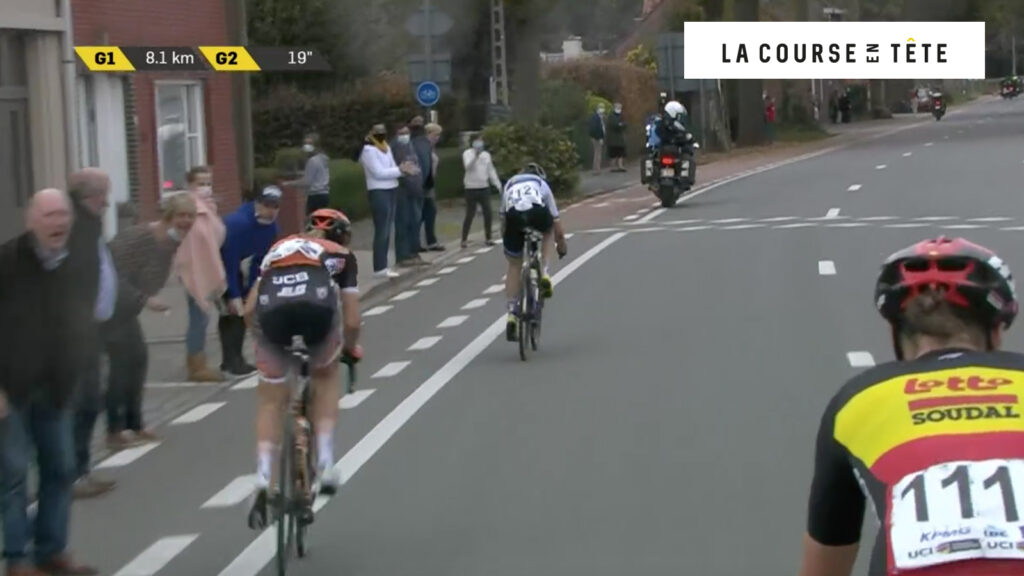
While their team-mate was time trialling to victory, van der Breggen and Pieters continued their exemplary domestique work. Every time somebody attacked, the Boels duo quickly neutralised it. With van Vleuten and recent Brabantse Pijl winner Grace Brown in the chase group, Mitchelton-SCOTT tried to tag-team van den Broek-Blaak’s helpers into submission.
When Brown kicked with 8.8 kilometres remaining, van der Breggen chased it down. Van Vleuten accelerated with force (again!) 700 metres later, but Pieters followed both that one and Brown’s subsequent counter. After van Breggen latched onto a short-lived attack from Brown and TIBCO’s Lauren Stephens a little inside of five kilometres from the finish, the chase group appeared resigned to their fate.
Van den Broek-Blaak’s gap swelled past the minute mark with two kilometres remaining, an advantage she held come the finish line. Pieters made it a Double Dutch/Boels one-two when she won the sprint for second. Lotto Soudal’s Lotte Kopecky completed the podium.
“I’m super happy with this,” Pieters said. “When you come second after a team-mate it feels like winning.”
Boels-Dolmans’ roster may feature world champions aplenty, but women’s cycling will continue to be in a good place as long as their dominant displays are still as tactically astute as this one.
You can find more of Nick Bull’s race analysis on Twitter

